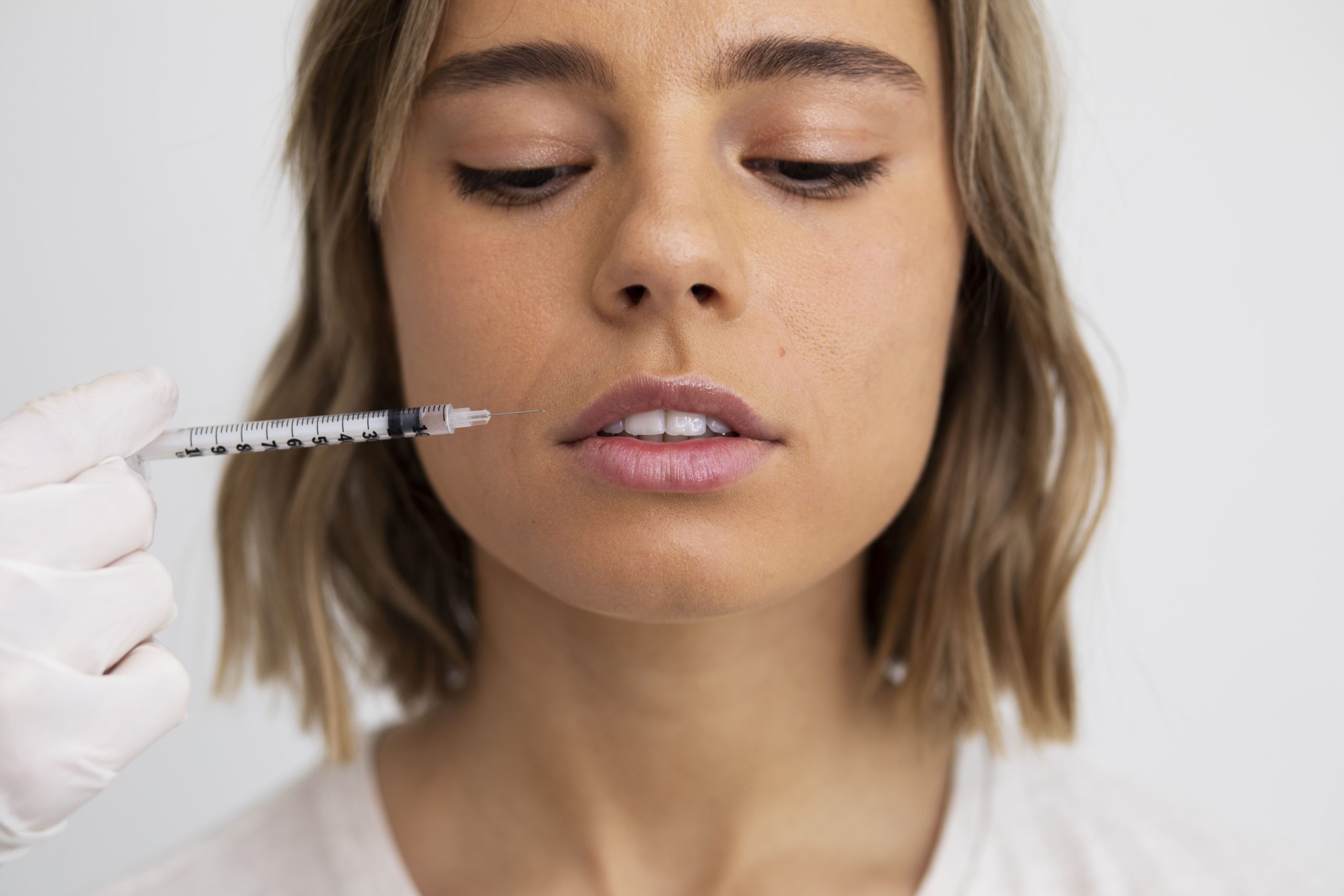Nucleofill Polynucleotide vs. Traditional Skin Boosters: What’s the Difference?

Key Takeaways
- Nucleofill polynucleotide treatments work by stimulating fibroblasts for long-term collagen production and skin regeneration.
- Traditional skin boosters, like those based on hyaluronic acid (HA), primarily provide deep hydration.
- Nucleofill improves skin firmness and texture, while HA boosters enhance moisture retention and surface glow.
- Ideal candidates for Nucleofill are those with fine lines, skin laxity, or signs of aging, whereas HA boosters are better for dehydrated, dull skin.
- In some cases, combining both treatments yields optimal results; hydration from HA and regeneration from polynucleotides.
Introduction
Regenerative injectables have become some of the most talked-about innovations in aesthetic medicine. While hyaluronic acid (HA) skin boosters have long been the go-to treatment for improving skin hydration and luminosity, a new player is making waves: Nucleofill, a polynucleotide-based solution focused on long-term skin regeneration. But what exactly sets Nucleofill apart from traditional skin boosters—and more importantly, when should one be chosen over the other? Let’s explore how Nucleofill polynucleotide compares to traditional HA skin boosters, what each one offers, and how to match the right treatment to the right patient.
What Is Nucleofill Polynucleotide and How Do Polynucleotides Work?
Nucleofill is a regenerative skin treatment based on highly purified polynucleotides, which are DNA fragments originally derived from salmon. These bioactive molecules trigger biostimulation, a process where skin cells, particularly fibroblasts, are encouraged to regenerate, produce new collagen and elastin, and repair tissue damage. Nucleofill also supports deep hydration by attracting water molecules into the dermis and enhances skin quality through antioxidant activity. Aestheticians and other medical professionals can buy polynucleotides online from Best Buy Fillers.
Rather than providing instant volumizing effects like dermal fillers, Nucleofill treatments improve skin quality from within, restoring firmness, elasticity, and tone over time. It’s especially effective in fragile or thin areas like the under-eyes and neck. Medical professionals can buy Nucleofill products from Best Buy Fillers shop.

How Do Traditional Skin Boosters Work?
Traditional skin boosters are typically made from cross-linked or non-cross-linked hyaluronic acid (HA), a naturally occurring sugar molecule that holds up to 1,000 times its weight in water. When injected into the dermis, HA attracts moisture and plumps the surrounding tissue, enhancing hydration, elasticity, and superficial radiance.
HA skin boosters don’t stimulate fibroblasts or repair tissue. Instead, they boost moisture levels and give skin a dewy glow. Popular options include products like Restylane Skinboosters and Juvederm Volite.
They’re ideal for patients with dull, dehydrated, or crepey skin, especially in areas like the cheeks, jawline, and décolletage. You can find more information from our Nucleofill skin booster blog post.
Nucleofill Polynucleotide vs. Traditional Skin Boosters: Head-to-Head Comparison
| Feature | Nucleofill Polynucleotide | Traditional Skin Boosters (HA) |
| Primary Mechanism | Biostimulation, collagen synthesis | Hydration via hyaluronic acid |
| Tissue Repair | Yes | No |
| Longevity of Effects | 6–9 months (depending on skin quality) | 3–6 months |
| Skin Firmness & Elasticity | High improvement over time | Moderate, temporary |
| Hydration | Deep hydration (gradual) | Immediate hydration |
| Ideal Treatment Areas | Under eyes, neck, hands, thin skin | Cheeks, jawline, forehead, décolletage |
| Best For | Aging, thinning, damaged skin | Dehydrated, tired-looking skin |
Ideal Use Cases and Treatment Areas
- Both treatments shine in different scenarios.
- Nucleofill is likely the better fit if a patient is struggling with
- Crepey under-eye skin
- Early laxity in the neck
- Loss of firmness in the hands,
It works deeper, regenerating tissue from within. It’s also a great option for patients who are cautious about volume or who have experienced puffiness with traditional HA fillers.
For patients looking for a skin “pick-me-up” ahead of a big event, or those in their 20s and 30s looking to maintain skin hydration, HA boosters offer a quick and effective refresh. They’re ideal for the cheeks, forehead, and décolletage, where superficial hydration can make a noticeable difference in patients with:
- Overall facial glow and hydration
- Skin smoothing in younger patients
- Superficial fine lines
- Preventive skincare for patients in their 20s or 30s
Looking to educate patients about potential risks? We break it down in this guide on Nucleofill eyes side effects.
Treatment Timeline & Protocol
Nucleofill treatments typically involve a protocol of 2 to 3 sessions spaced about 3–4 weeks apart. Because it works by stimulating biological processes, results are not immediate but build up over time, usually peaking around 6 to 8 weeks after the final treatment. Maintenance sessions are recommended every 6 to 9 months, depending on the patient’s age, skin condition, and lifestyle.
Traditional HA boosters can often deliver visible results after just one session, although many practitioners recommend 2 sessions for best results. Maintenance is usually needed every 3 to 6 months to sustain hydration.
| Nucleofill | HA Skin booster |
| Usually requires 2 to 3 sessions, spaced 2–4 weeks apart | Usually 1 to 2 sessions, spaced a month apart |
| Effects become visible after 2–3 weeks, full results within 6–8 weeks | Hydration results are immediate |
| Maintenance every 6–9 months | Maintenance every 3–6 months |
When to Combine Both Treatments
Combination therapy can provide superior results in patients with both superficial dehydration and deeper signs of aging. For instance:
- Start with Nucleofill to stimulate collagen production
- Follow up with HA boosters to restore immediate radiance
This layered approach allows for long-term skin health and instant visual refreshment.

FAQ
What is the difference between Nucleofill and skin booster?
Nucleofill is based on polynucleotides and works by regenerating skin from within. Traditional skin boosters use hyaluronic acid to hydrate and plump skin.
What is the best type of skin booster?
It depends on patient needs. For hydration and glow, HA boosters are ideal. For tissue repair and anti-aging, polynucleotide-based boosters like Nucleofill work better.
Can Nucleofill go wrong?
When administered correctly, Nucleofill has a strong safety profile. Mild swelling or bruising may occur but usually resolves quickly.
Does Nucleofill actually work?
Yes, clinical and real-world results show significant improvements in skin texture, tone, and firmness, especially in delicate areas like the under-eyes and neck.
Are skin boosters better than filler?
They serve different purposes. Skin boosters improve skin quality and hydration; fillers restore volume and reshape facial contours.
Conclusion
Nucleofill polynucleotide treatments offer a regenerative edge in aesthetic medicine, addressing concerns that HA-based skin boosters simply can’t fix. While traditional skin boosters remain a staple for hydration, Nucleofill is the go-to for long-term skin regeneration, firmness, and repair. Choosing the right option—or combining both—depends on the patient’s skin condition, age, and goals. Understanding their differences empowers medical professionals to deliver more precise and satisfying outcomes.
Sources
- Kuppa SS, Kim H-K, Kang J-Y, Lee S-C, Yang H-Y, Sankaranarayanan J, Seon J-K. Polynucleotides Suppress Inflammation and Stimulate Matrix Synthesis in an In Vitro Cell-Based Osteoarthritis Model. International Journal of Molecular Sciences. 2023; 24(15):12282. https://doi.org/10.3390/ijms241512282
- Cassuto D, Bellia G, Schiraldi C. An Overview of Soft Tissue Fillers for Cosmetic Dermatology: From Filling to Regenerative Medicine. Clin Cosmet Investig Dermatol. 2021;14:1857-1866. Published 2021 Dec 22. doi:10.2147/CCID.S276676 https://pmc.ncbi.nlm.nih.gov/articles/PMC8710524/
- Lee KWA, Chan KWL, Lee A, et al. “Polynucleotides in Aesthetic Medicine: A Review of Current Practices and Perceived Effectiveness.” Int J Mol Sci. 2024;25(15):8224. Published 2024 Jul 27. doi:10.3390/ijms25158224 https://pmc.ncbi.nlm.nih.gov/articles/PMC11311621
Continue reading

Radiesse or Juvederm? Which One Should You Use for Facial Contouring?
Facial contouring is more than just adding volume – it’s about sculpting definition, correcting asymmetries, and enhancing structure. Achieving those goals requires the right product, precise technique, and a deep understanding of dermal filler properties. Among the most commonly used injectables in aesthetic medicine, Radiesse and Juvederm stand out as…
Read More
Radiesse vs Sculptra: Which Collagen-Stimulating Filler Is Better?
As the popularity of natural beauty trends, like the no-makeup makeup look, continues to rise, the demand for subtle, long-lasting enhancements has reshaped the filler industry as well. More patients are turning to treatments that enhance their features while correcting concerns like uneven texture or volume loss, all without compromising…
Read More
Non-Surgical Jaw Definition: Radiesse Jaw Before and After Transformation
In the age of defined features and sculpted profiles, jawline contouring has become one of the most in-demand aesthetic procedures among both male and female patients. But not everyone is ready for surgery or permanent changes. That’s where non-surgical options like Radiesse jawline enhancement come in, offering a high-impact transformation…
Read More